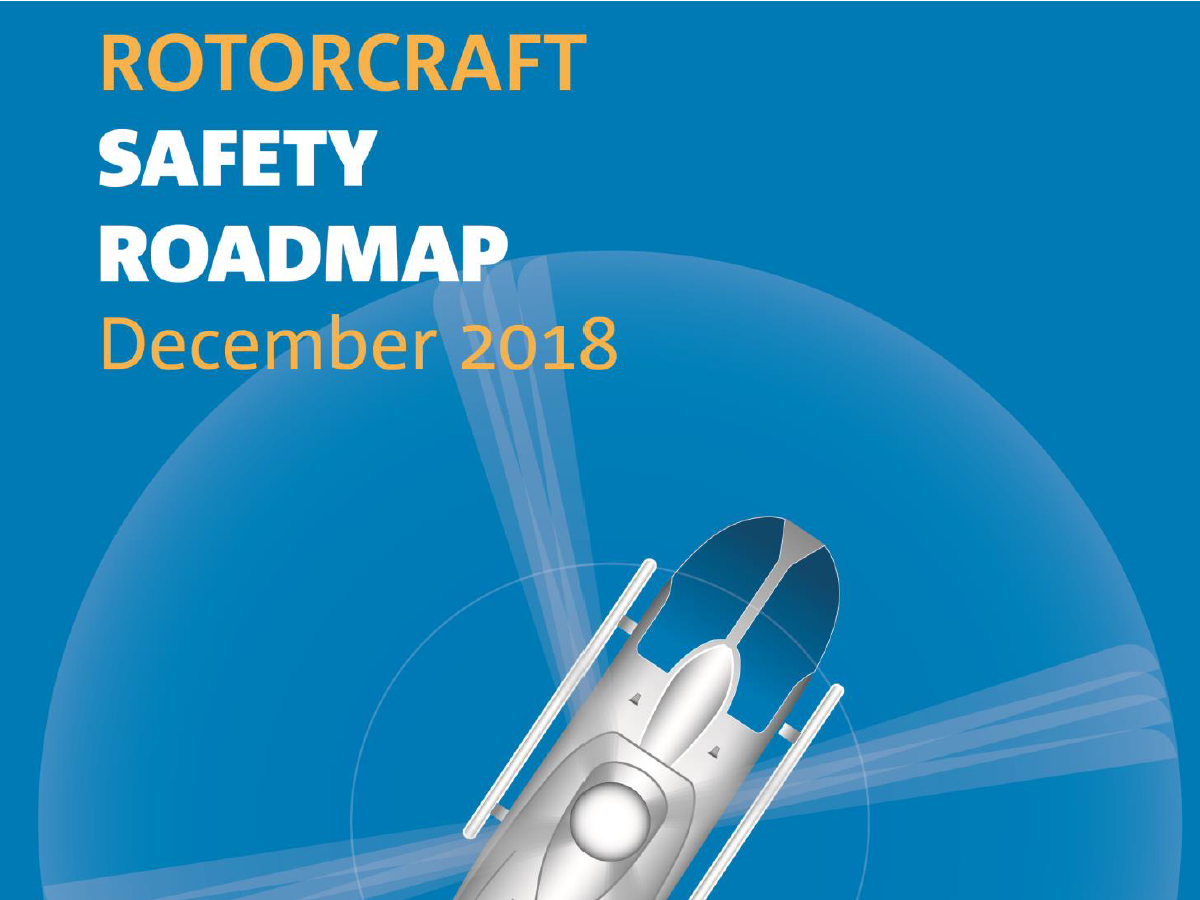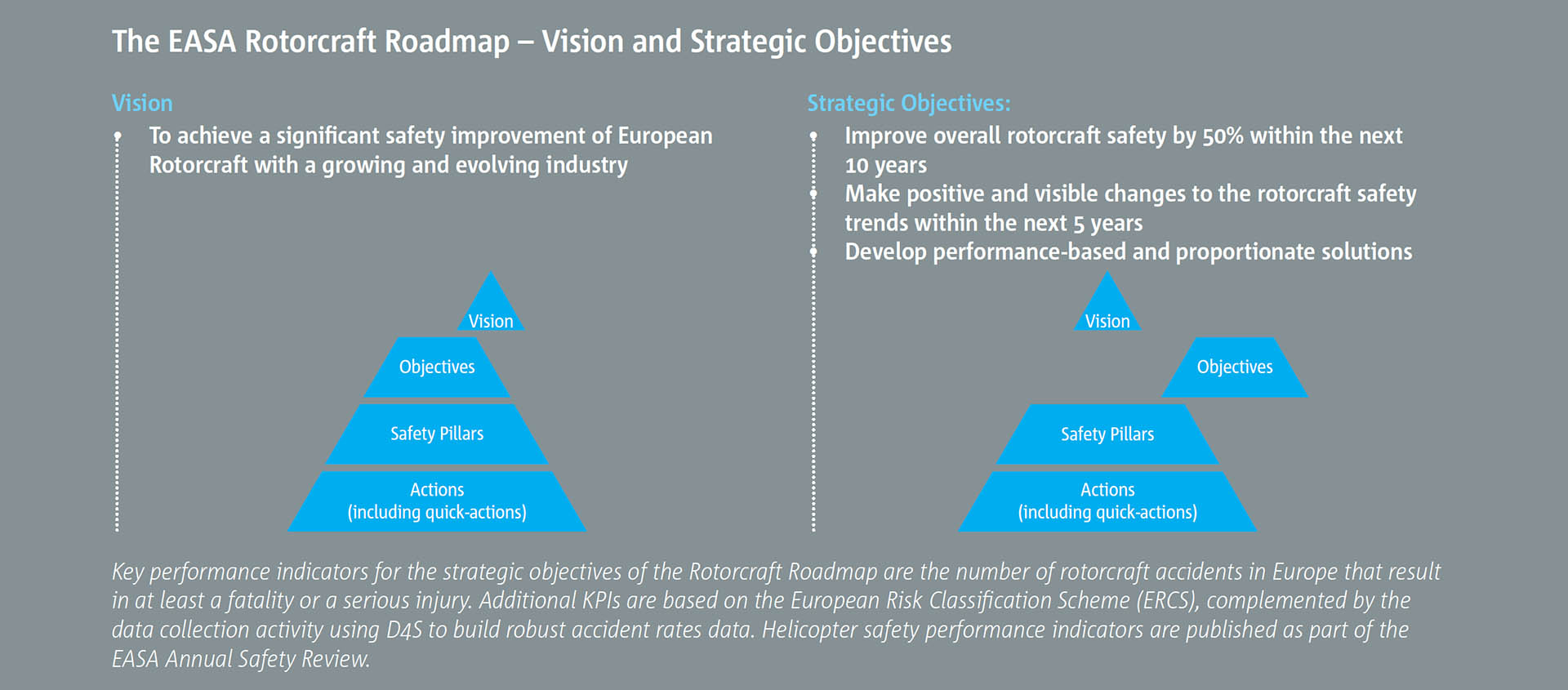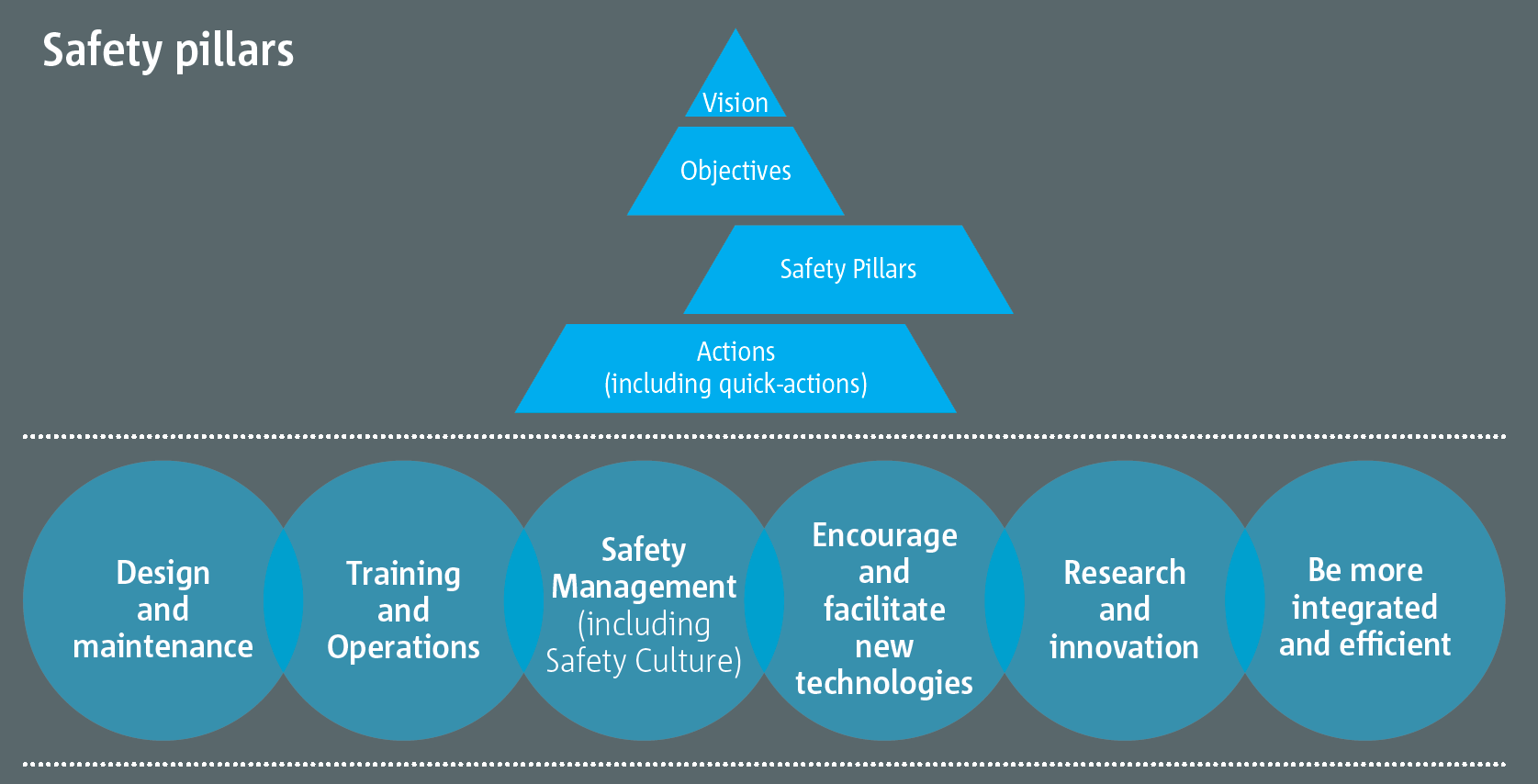The Need for the Rotorcraft Roadmap
Over the past few years the number of EU-wide fatalities caused by rotorcraft accidents has stagnated. The Rotorcraft Roadmap was established to reduce the number of accidents and incidents and save lives. It was developed by a group of external experts from the NAAs and the European rotorcraft industry and is focused on a wide range of transversal issues including training, operations, initial and continuing airworthiness, the environment and innovation.

Vision and Objectives
The scope of the Roadmap is towards traditional/conventional rotorcraft. It’s main objective is to significantly improve the safety of European rotorcraft, with a more specific target of a 50% safety improvement over the next 10 years. Another important goal is to strengthen the helicopter industry, mainly the small operators, in a sustainable way. Alongside these main goals, many sub-goals, tasks and activities that involve both EASA and the wider Helicopter community. These will lead to a significant safety improvement and strengthening of industry. Examples include installation of autopilots in small helicopters, a better safety culture, incentives for new technologies and more.

So just to be clear, the Strategic Objectives of the Rotorcraft Roadmap are:
- Improve overall Rotorcraft safety by 50% within the next 10 years, measured by the number of Rotorcraft accidents in Europe for all types of EASA operations with at least a fatality or a serious injury.
- Make positive and visible changes to Rotorcraft safety trends within the next 5 years.
- Develop performance-based and proportionate solutions to help maintain competitiveness, and the sustainability of the Rotorcraft industry.
Targeting Light Rotorcraft and Small Operators
If we look at Europe’s helicopter operators the vast majority (about 90%) have a fleet of 5 or less helicopters, most of which only own one aircraft. Helicopter operations is a tough day-to-day business, trying to earn enough money whilst also keeping helicopter(s) flying. The majority of these helicopters are lighter rotorcraft such as the Robinson R44, the Airbus A350 and the R22. Most of these operators are flying leisure flights, special operations such as aerial work in agriculture and mountains, helicopter emergency medical services and training flights.
It’s a fragmented community, which is very much concerned with the day-to-day business, similar in many ways to the General Aviation community. The Roadmap is specifically designed to support this community.
The Safety Pillars of the Roadmap
We split the Roadmap into the 6 Safety Pillars shown in the picture below. These are the different areas where improvement can contribute to safe and effective Rotorcraft operations.

The EASA Rotorcraft Safety Roadmap Actions
The roadmap focuses on transversal issues and includes training, operations, initial and continuing airworthiness and innovation.
Actions are organised into the following 12 work streams, we will continually update the information here so that you stay up to date with all the latest developments:
Data:
The objective is to help improve data-driven decision making within the rotorcraft community. The main actions are:
- Engage with Industry to collect and consolidate exposure data and other statistics (the more flight hours and cycles data there is – the better decisions we can make).
- Enhance the Rotorcraft Safety Analysis capacity at European Level.
- Introduce Rotorcraft into the EASA Data4Safety big data initiative.
Incentivise Safety:
The objective is to implement safety improvements quicker through incentivising safety improvements. The main action is to define ways to incentivise Safety with regards to airworthiness and environmental standards.
Rotorcraft Safety Rating:
The objective is to incentivise safety by introducing an industry-led Rotorcraft Safety rating scheme. This aims to enable Operator and Customer informed decision making. The main actions are:
- Make a comparative review of the Schemes available in other industries. Define an initial concept with the intended objectives and framework.
- Progress the concept definition and engage with European Manufacturers. Identify the technologies granting safety benefits.
- Finalise a proposal for the introduction of a Rotorcraft Safety rating scheme to be presented to the wider industry.
Financial Support for Safety:
The objective is to support quicker implementation of Safety actions. Find a way to provide financial support to implement changes. The main actions are:
- Create a helicopter Safety case at EC and Member states using one voice.
- Select the potential equipment/technologies for which support would be needed.
- Define the appropriate Business Cases and start engaging with the relevant stakeholders.
Training Safety:
The objective is to have better safety awareness and reduction in training risks. The main actions are:
- Introduce a Mandatory Safety Awareness in recurrent training.
- Review Regulations to promote less checking more training.
- Reduce high-risk training scenarios in flight.
- EASA to raise awareness on the risks of some training scenarios.
- EASA to review the timeline associated to the RMT.0194 Modernise the European pilot training system.
- Align the licensing recurrent requirements for rotorcraft with the one for GA fixed wing.
Training Devices:
The objective is to develop new, cheaper training Devices for GA helicopters. The main actions are:
- Paradigm shift to focus on the training scenario and on operational training while removing the regulatory blockages in the certification of Flight Simulators to enable the use of advance technologies.
- Put in place credit for the use of new training devices.
- Encourage the development of new types of training devices to better address light and medium in operation helicopters.
- Perform a training needs analysis and define the training capacities and limitations for each types of training devices.
- Develop Mission Specific training recommendations and best practices.
Continued Aviation Education:
The objective is to develop the concept Continued Aviation Education using experience from the continued medical education (CME) for Accountable Managers, Nominated Personnel, Pilots, Instructors, Examiners/Inspectors, and maintenance staff. The objective is to develop new, cheaper training Devices for GA helicopters. The actions are currently under development.
Safety Promotion:
The objective is to communicate effectively on safety topics in order to change behaviours in a sustainable way. This website is a key part of that safety promotion effort. The main action is to develop and implement a Rotorcraft Safety Promotion Plan in collaboration with all stakeholders in the community.
Simplification:
The objective is to make better use of our resources to improve aviation safety. We will evaluate and address the unnecessary administrative burden put on operators and the wider industry.
Design:
The objective is improve the design of rotorcraft. The main actions are:
- Reduce the number of rotorcraft flying in Europe without crashworthy fuel tanks and seats.
- OEMs to develop product specific safety improvement roadmap.
- Develop a Safety Continuum in Rotorcraft.
Net Safety Benefit:
The objective is help bring new technologies to the market as quickly as possible. The main actions are:
- EASA to establish a policy on the net safety benefit approach and to facilitate the introduction of new technology (in coordination with the GA Roadmap).
- Define the process to identify the systems and equipment providing safety benefits.
- RMT.0727 “Part 21 —simple and proportionate rules for GA.
CS Modernisation:
Another key part of design improvements is the modernisation and improvement of the Certification Specifications that determine the standards to which helicopters are designed and built.
The EASA Rotorcraft Safety Roadmap published in 2018 will evolve as new developments or events will take place.
Calls for Working Together
All together we can make the changes – it’s not the regulator alone, not the operator alone, not the TC holder alone, not the training organisations alone, etc. We have to work together to deliver and fulfil the roadmap’s vision and ambitious objectives!